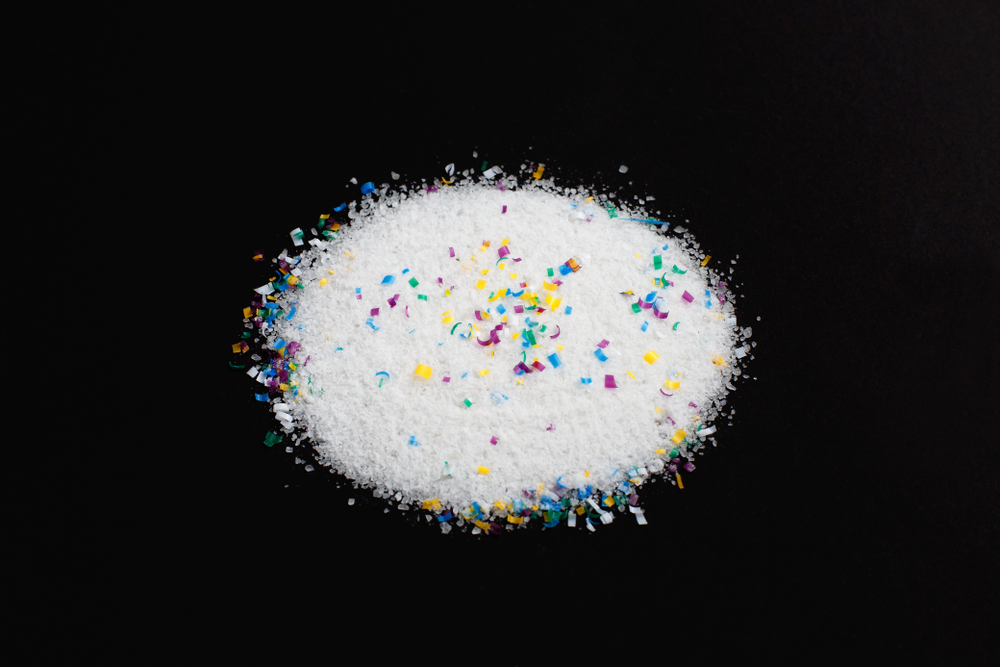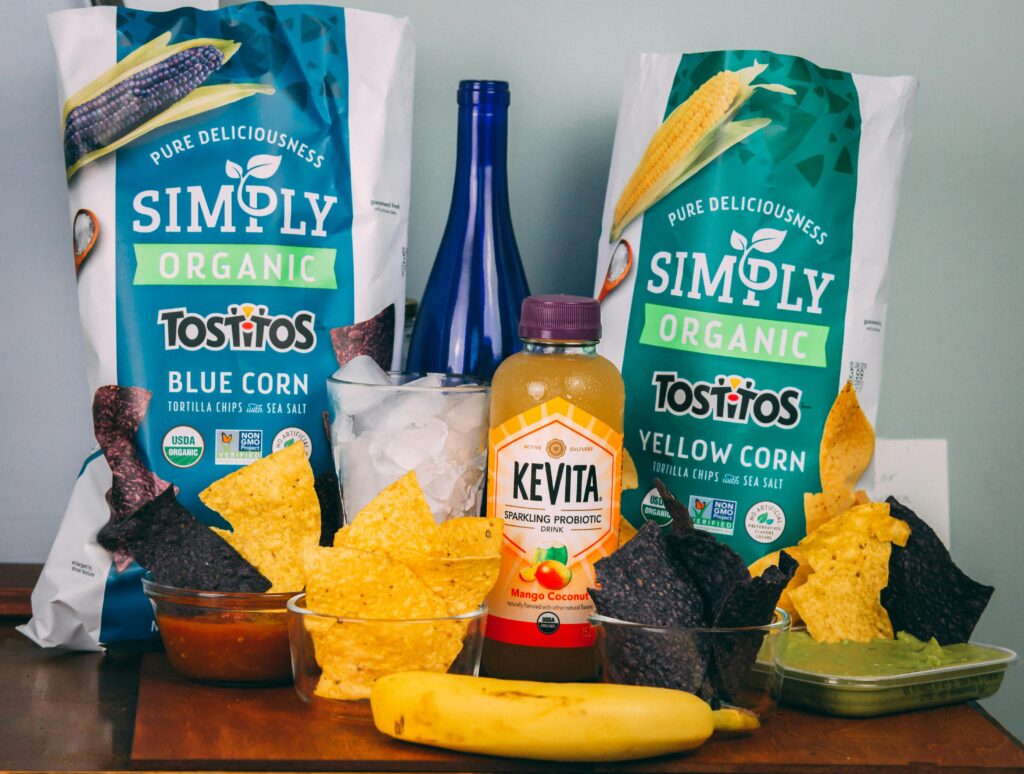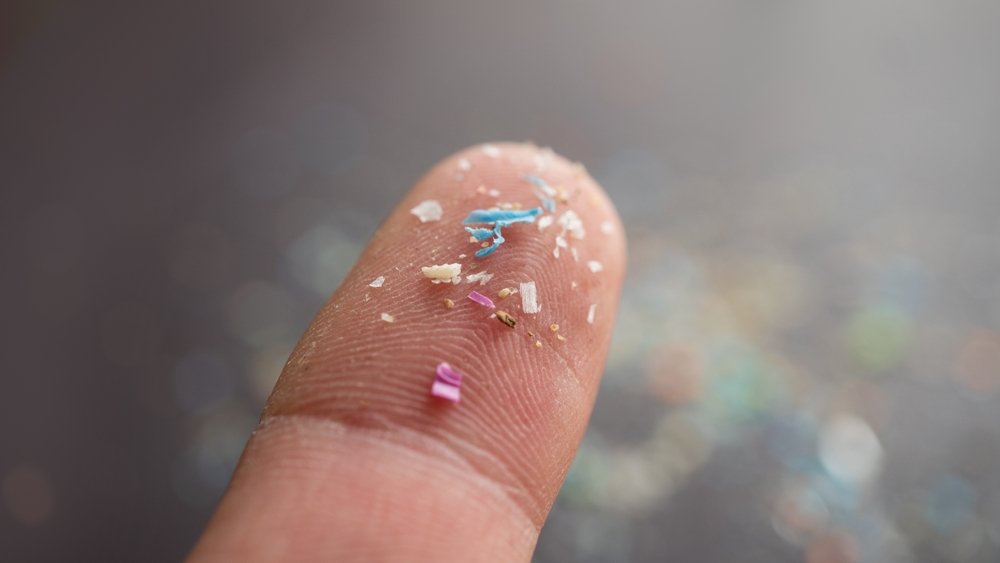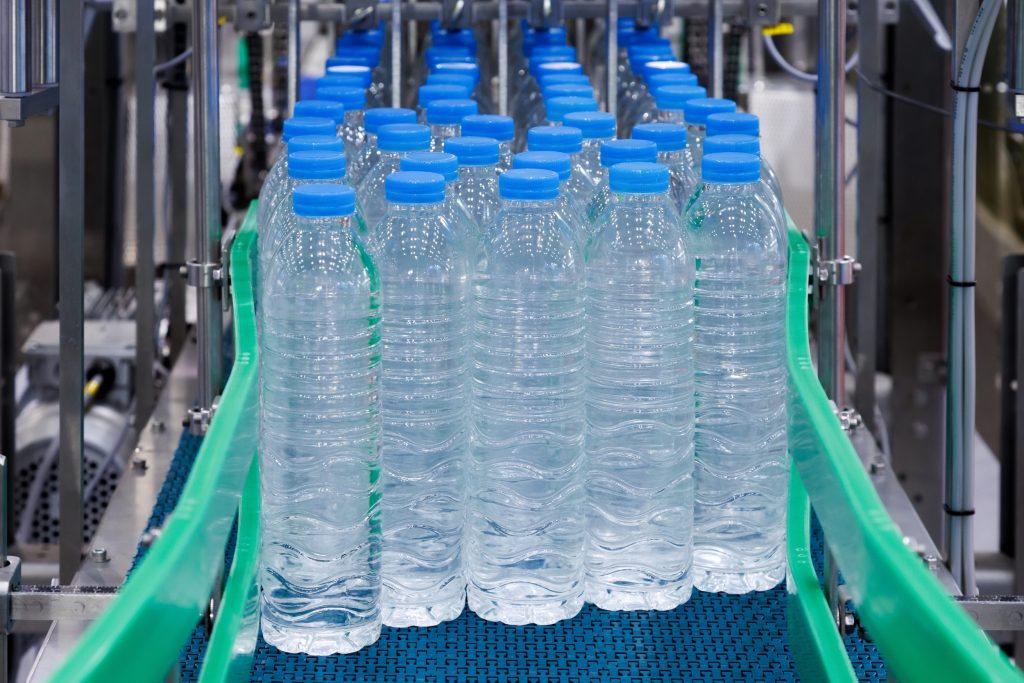How Microplastics From Ultra Processed Foods May Harm Your Brain and Mental Health

We live in an era where convenience has become the currency of modern life. With a tap, a swipe, or a microwave beep, meals are ready in minutes packaged, processed, perfected for profit. But hidden beneath the glossy wrappers and artificial flavors lies a growing concern that doesn’t make it onto the label.
Every year, the average person consumes an estimated 5 grams of microplastics about the weight of a credit card. Now imagine a plastic spoonful lodged in your brain. That’s not science fiction. Recent research has found alarming concentrations of microplastics fragments smaller than a grain of sand accumulating in human brain tissue. And many of these particles are hitching a ride into our bodies through the ultra-processed foods we eat every day.
As mental health challenges surge globally, scientists are looking not just at what’s missing in our diets but what’s being added. Could the very foods designed for ease and shelf life be silently affecting our emotional stability, cognitive clarity, and long-term brain health?
What Are Ultra-Processed Foods And Why They Matter for Your Brain
Ultra-processed foods have become the modern diet’s backbone fast, cheap, and everywhere. These aren’t just snacks and sodas; they’re industrial formulations engineered from substances extracted from real food and combined with additives to enhance texture, color, flavor, and shelf life. According to the NOVA food classification system, ultra-processed foods (UPFs) include items like instant noodles, sugary drinks, frozen dinners, packaged pastries, and breakfast cereals that bear little resemblance to anything grown or raised.
Unlike minimally processed or whole foods, UPFs are often stripped of fiber, essential vitamins, and healthy fats, then fortified with synthetic ingredients to mimic real nourishment. What’s left is a product high in refined sugars, saturated fats, and salt designed for overconsumption and hyper-palatability rather than true sustenance.
Globally, the rise of UPFs has been staggering. In high-income countries, they account for more than half of daily calorie intake. Their dominance is driven by aggressive marketing, affordability, and an increasingly busy lifestyle that favors grab-and-go eating over home-cooked meals. But while these foods have streamlined our lives, they may be unraveling something much more vital our mental well-being.
Did you know that the average human brain now contains enough microplastic fragments to equal the weight of a plastic spoon? 😳
— Food & Water Watch (@foodandwater) July 19, 2025
We need to end the fossil-fuel-to-plastic pipeline that’s making this dangerous problem so pervasive! pic.twitter.com/iiTYN19AuT
Mounting scientific evidence draws a clear line between UPF consumption and mental health decline. Studies published in The BMJ and led by institutions like Harvard Medical School reveal that high intake of UPFs is associated with a 22% higher risk of depression, a 48% greater risk of anxiety, and a 41% increase in sleep-related issues. These aren’t abstract figures they represent real lives marked by fatigue, restlessness, and emotional instability.
Clinical trials further support these links. The SMILES trial, a pioneering study in nutritional psychiatry, showed that participants with moderate to severe depression experienced significantly improved mood after switching from ultra-processed diets to whole-food alternatives for just 12 weeks. Nearly one in three achieved full remission.
This emerging connection between diet and mental health signals that ultra-processed foods may not only lack the nutrients our brains need they may also contain substances that actively impair mental functioning. Among the most concerning of these substances are microplastics, which are now being investigated as a possible missing link between what we eat and how we feel.
Microplastics: The Silent Intruders in Our Diets

They’re invisible to the naked eye yet they’re turning up in bloodstreams, organs, and now, even in the human brain. Microplastics, tiny plastic particles less than five millimeters in size, have become an unavoidable part of modern life. Born from broken-down packaging, industrial processes, and synthetic materials, these fragments now contaminate the air we breathe, the water we drink, and the food we consume. And increasingly, their most direct route into our bodies may be through the ultra-processed meals we trust for convenience.
Ultra-processed foods are not just nutrient-poor; they are also microplastic-rich. From production lines to packaging, many of these foods are exposed to plastics at multiple stages. Microwaving meals in plastic containers, storing snacks in plastic wraps, or eating from foam takeout trays all of these behaviors contribute to plastic particles leaching into what we consume. In fact, studies have shown that microwaving plastic containers can release millions of micro- and nanoplastic particles into food in just a few minutes. One analysis found that a single gram of chicken nuggets could contain up to 30 times more microplastics than the same amount of chicken breast.
What’s most unsettling is that these particles don’t just pass through us they persist. Research has identified polyethylene and other microplastic residues embedded in human tissues, with brain concentrations up to 30 times higher than those in organs like the liver or kidneys. A recent study even observed a 50% increase in brain microplastic levels from 2016 to 2024 mirroring the rise in consumption of ultra-processed foods during that same period.
These findings aren’t just theoretical. A study published in Nature Medicine estimates that the average human brain now contains about a spoonful of plastic fragments. While researchers are still exploring how these particles cross the blood-brain barrier, their presence in neural tissue is now confirmed. The implications are profound especially when we consider that people with cognitive disorders such as dementia have been found to carry three to five times more brain microplastics than others. Though causality has not yet been proven, the correlation raises serious questions.
How Microplastics May Disrupt Mental Health

What happens when synthetic particles, designed to resist breakdown for centuries, make their way into one of the body’s most sensitive and complex organs the brain? Scientists are now confronting this question with urgency, as microplastics have been detected in human brain tissue at levels far higher than previously imagined. Though research into the neurological effects of microplastics is still in its early stages, preliminary findings suggest multiple pathways through which these particles may compromise mental health.
Neuroinflammation and Oxidative Stress
One of the clearest threats posed by microplastics is their ability to induce chronic inflammation. Studies conducted on animals and cell cultures show that microplastics can provoke an immune response, activating microglia the brain’s resident immune cells and setting off a cascade of inflammatory reactions. These responses increase oxidative stress, a harmful condition where free radicals outpace the brain’s antioxidant defenses, potentially leading to neuron damage and impaired cognitive function.
Neurotransmitter Disruption
Microplastics may also interfere with neurotransmitter systems the chemical messengers that regulate mood, cognition, and behavior. Evidence suggests they can alter the function of key neurotransmitters such as acetylcholine, which is critical for learning and memory, GABA, the brain’s primary calming signal, and glutamate, which plays a central role in mood regulation and neuroplasticity. Even subtle changes in these systems can affect mood stability, anxiety levels, and mental clarity.
Crossing the Blood-Brain Barrier
The brain is protected by the blood-brain barrier, a selective shield that blocks harmful substances from entering. But microplastics especially those under 200 nanometers are small enough to penetrate this barrier. Once inside, they may accumulate in specific brain regions. According to neurologist Dr. Clifford Segil, the location of accumulation could determine the effect: plastic particles in the frontal cortex may influence behavior, while those in the temporal lobes might affect memory or emotional processing.
Plastic Additives: The Chemical Threat Within
It’s not just the plastic itself that raises concern. Additives like bisphenol A (BPA) commonly used in food packaging can leach into food and act as endocrine disruptors. BPA has been associated with autism, depression, and anxiety in some human studies. Though many plastic additives are approved for use, their long-term impact on neurological health, especially in combination with chronic exposure, remains largely untested.
The Dementia Link and Ongoing Debate
Recent studies have found higher microplastic levels in the brains of individuals with dementia. While this doesn’t confirm causation, it raises a critical scientific question: are these plastics contributing to neurological decline, or do degenerating brains simply absorb more due to increased permeability? According to psychiatrist Dr. Jo Ellen Wilson, answering this question is a top priority and one that may reshape how we understand both environmental toxins and brain disease.
Ultra-Processed Foods as Microplastic Delivery Vehicles

The connection between ultra-processed foods (UPFs) and mental health has often been attributed to poor nutrition: low fiber, excess sugar, and artificial additives. But scientists are now zeroing in on a deeper, more insidious factor ultra-processed foods may also act as major delivery vehicles for microplastics.
Industrial food production relies heavily on plastic at every stage from manufacturing and packaging to storage and reheating. This makes UPFs uniquely vulnerable to plastic contamination. When foods are wrapped in plastic films, stored in plastic containers, or microwaved in plastic trays, they can absorb and retain tiny plastic particles. And since many of these foods are already stripped of protective nutrients, there’s little to buffer the body against what comes with them.
Data supports the scale of the problem. Researchers have found that processed items like chicken nuggets contain up to 30 times more microplastics per gram than unprocessed chicken breast. Heating food in plastic containers a common practice with ready-to-eat meals can release millions of micro- and nanoplastics into the food within minutes. Over time, repeated exposure like this adds up, increasing the body’s microplastic burden with each packaged snack or convenience meal.
This contamination isn’t accidental it’s baked into the design of modern food systems. Mass production favors plastic because it’s cheap, durable, and efficient. But what’s gained in shelf life may be lost in long-term health. Researchers now believe that the mental health risks associated with UPFs including depression, anxiety, and poor sleep may not only stem from nutritional deficiencies but also from chemical and physical contaminants like microplastics and bisphenol A.
How to Reduce Microplastic Exposure in Your Life

While microplastics are nearly impossible to avoid entirely, there are meaningful steps you can take to lower your exposure especially through the food you eat and the way you prepare it. These small, intentional shifts don’t just protect your physical health they may also safeguard your brain and emotional well-being over time.
1. Rethink Food Packaging and Storage
Plastic containers are one of the most common sources of microplastic contamination. Heating food in them especially in the microwave can release a surge of plastic particles into your meal. Instead, opt for glass, stainless steel, or ceramic containers whenever possible. Use beeswax wraps, silicone bags, or cloth pouches instead of plastic wrap for storing snacks or leftovers.
2. Avoid Microwaving in Plastic
Even “microwave-safe” plastic containers can shed microplastics when heated. If convenience demands a quick reheat, transfer your food to a non-plastic plate or bowl before microwaving. This simple step can dramatically reduce exposure from one of the most common daily habits.
3. Choose Whole and Fresh Over Packaged
Ultra-processed foods are among the most microplastic-laden items due to their extensive packaging and industrial handling. By choosing whole, unprocessed foods fresh vegetables, grains, fruits, lean proteins you limit both chemical additives and synthetic particle intake. Cooking at home with real ingredients also helps you control the materials that come in contact with your food.

4. Filter Your Water
Tap water and bottled water can both contain microplastics. Certain water filters especially those with fine-pore or activated carbon technology have been shown to reduce microplastic content. Use a high-quality filter at home, and avoid drinking from disposable plastic bottles when possible. Reusable glass or stainless steel bottles are better choices for both health and the environment.
5. Be Selective With Kitchen Tools
Even everyday items like plastic cutting boards and utensils can shed microplastics over time. Switch to wood, bamboo, or stainless steel alternatives. Avoid using heavily scratched or worn plastic tools, which are more likely to shed particles into your food.
6. Watch for Food Labels and Emerging Certifications
As research grows and public awareness increases, more food producers may begin labeling microplastic-safe practices or switching to compostable packaging. Pay attention to ingredient transparency and favor brands that prioritize safer materials.
7. Support Policy and Innovation
While individual choices matter, large-scale solutions will require systemic change. Support public health initiatives, scientific research, and food companies working to reduce plastic use in processing and packaging. Consumer demand has the power to influence the market.
What We Feed Our Minds
A spoonful of plastic in the brain. It sounds surreal like a metaphor gone too far. But this is no metaphor. It’s the physical reality of a world that has blurred the line between nourishment and contamination.
Ultra-processed foods were never just about calories. They represent a shift in how we eat, how we live, and ultimately, how we feel. While science continues to untangle the exact mechanisms, the signals are loud and clear: the more we consume food made for shelf life instead of soul life, the more we risk our clarity, stability, and connection to ourselves.
Microplastics may be invisible, but their presence is not silent. They carry the weight of every shortcut we’ve taken in the name of speed and convenience. And while much of their impact remains under investigation, the early evidence on inflammation, brain chemistry, and emotional health demands attention, not denial.
This isn’t about fear. It’s about awareness. It’s about remembering that food is not just fuel it’s instruction. Every bite tells your brain what kind of day it will have. Every habit becomes a message to your cells about whether to protect, repair, or break down.
You don’t need to overhaul your life overnight. But you can start small. Swap the plastic tray for a ceramic one. Choose the whole grain over the instant fix. Use your plate as a protest against the synthetic storm quietly seeping into our minds.
Because in the end, this isn’t just about what we’re eating. It’s about what we’re becoming.
Loading...

